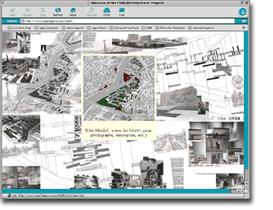Kultura Dva in Digital Space: A Virtual Museum of the USSR
Preface to the Museum of the USSR
— Vladimir Paperny (Los Angeles)
A quarter of a century ago, I started looking at the shapes of the Soviet architecture, trying to “read” them as cultural utterances. The results were published in Russian under the title Kul’tura dva (Culture Two) first by Ardis Publishers (1985) then by Moscow journal Novoe literaturnoe obozrenie (1996). The English translation will be released by Cambridge University Press next year.
A few years ago, a young Russian architectural student at the University of Utah, Olga Filippova, started thinking in the opposite direction. She took the basic concept … Read more






